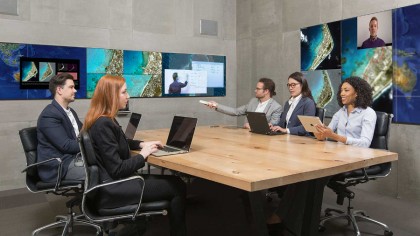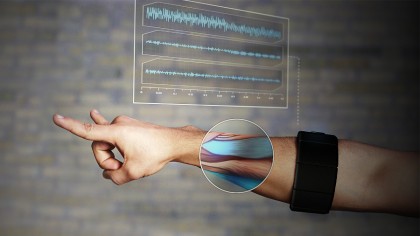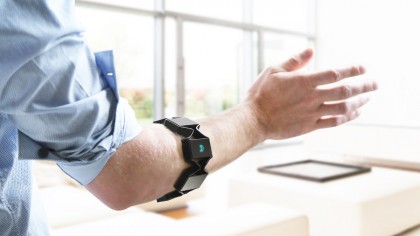Cruise control
Perhaps more in keeping with the spirit of Waldo, there has also been a resurgence and popularisation of 'gloved' remote manipulation, partly as a result – again – of science fiction novels and movies such as Spielberg's uber-influential 2002 movie Minority Report. Mostly, manufacturers are attempting to replicate Tom Cruise's ability to control screens via movement (so-called gesture interaction/control), but there is some overlap with telepresence – the most obvious being Oblong Industries' Mezzanine solution.

Mezzanine employs a similar gestural screen technology to Minority Report, although it's utilised for impressive interactive conferencing solutions rather than to prevent future murders. Indeed, in another example of just how strong fiction is when it comes to influencing fact (and vice versa!), prior to working with Oblong, CEO John Underkoffler was appointed by Spielberg as science and technology adviser on Minority Report!
Mezzanine was devised to simultaneously engage multiple users (including those working remotely) and their devices and data – something the company calls 'Infopresence' (you say tomato…), or the integration of multiple locations, users, devices and streams of information in a collaborative environment.
The system links locations and teams together, crucially allowing external team members to bring their devices and data together in a shared visual space – whilst also allowing main Mezzanine participants to control the data on the suite's multiple displays by use of a gesture wand. It's Minority Report meets Harry Potter via Waldo.

Myo muscles
Minority Report's John Anderton (Tom Cruise) might be more comfortable with Thalmic Lab's Myo armband (now available for $200 – around £130 or AU$275 – on Amazon). Myo is designed to fit around a user's forearm, detecting small muscle movements, rotations of the arm and also electrical muscle impulses. Eight sensors contact with a user's skin, reading electromyographic (EMG) signatures from muscles. Currently, users can flick their wrists to move data across integrated displays and clench fists and rotate arms to adjust volume.
And how does this cross over into telepresence? Thalmic Labs is keen that Myo integrates with smart glass wear technology such as Google Glass (and presumably Google Glass 2), Epson Moverio and Recon Jet – and, unsurprisingly, Oculus Rift.

It's easy to envisage how this could provide a boardroom-based gesture solution, with remote users communicating via virtual reality headsets. Indeed, some are speculating that remote communication is what Mark Zuckerberg had in mind when he splashed $2 billion (around £1.3 billion, or AU$2.75 billion) on Oculus Rift in the spring of 2014. He has certainly stated that he sees Rift as "a platform for many other experiences" and a "new communication platform".
Are you a pro? Subscribe to our newsletter
Sign up to the TechRadar Pro newsletter to get all the top news, opinion, features and guidance your business needs to succeed!
He adds: "By feeling truly present, you can share unbounded spaces and experiences with the people in your life." 'Truly present telepresence' is clearly a possibility and businesses will have taken note of the potential for more cost effective, virtual presence videoconferencing.
Sugar-coated robotics
So, working from home the Waldo way continues to evolve, and at a rapid rate. Gesture-controlled communications, physically present robotic avatars, VR-goggled virtual visuals – these things are all coming together to make the experience of working from home much more akin to actually attending that board meeting.
Intriguingly, last year's Annual Robot Film Festival awarded 'Best Telepresence' movie to Robots in Alaska: The Making of Sugar Mountain, a narrative ski film showcasing 'world-first' drone tech by 3D Robotics. So, perhaps we shouldn't limit telepresence avatars to clunky movement via wheels or mechanical legs, but consider flying from meeting to meeting via a drone controlled by gesture and a VR headset. Now that would make Waldo really proud…